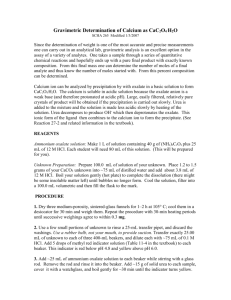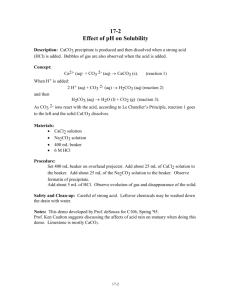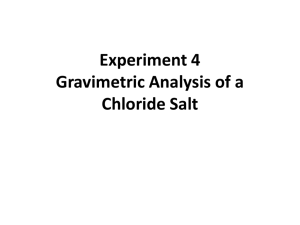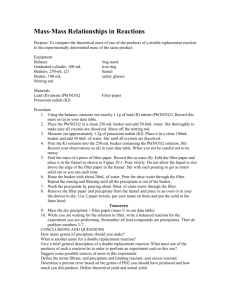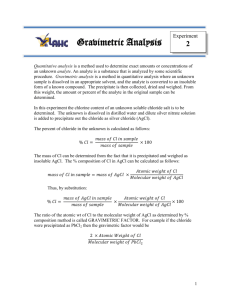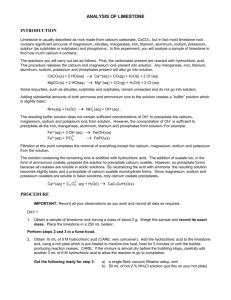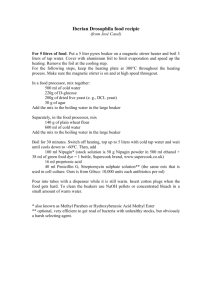Gravimetric Determination of Calcium as CaC2O4
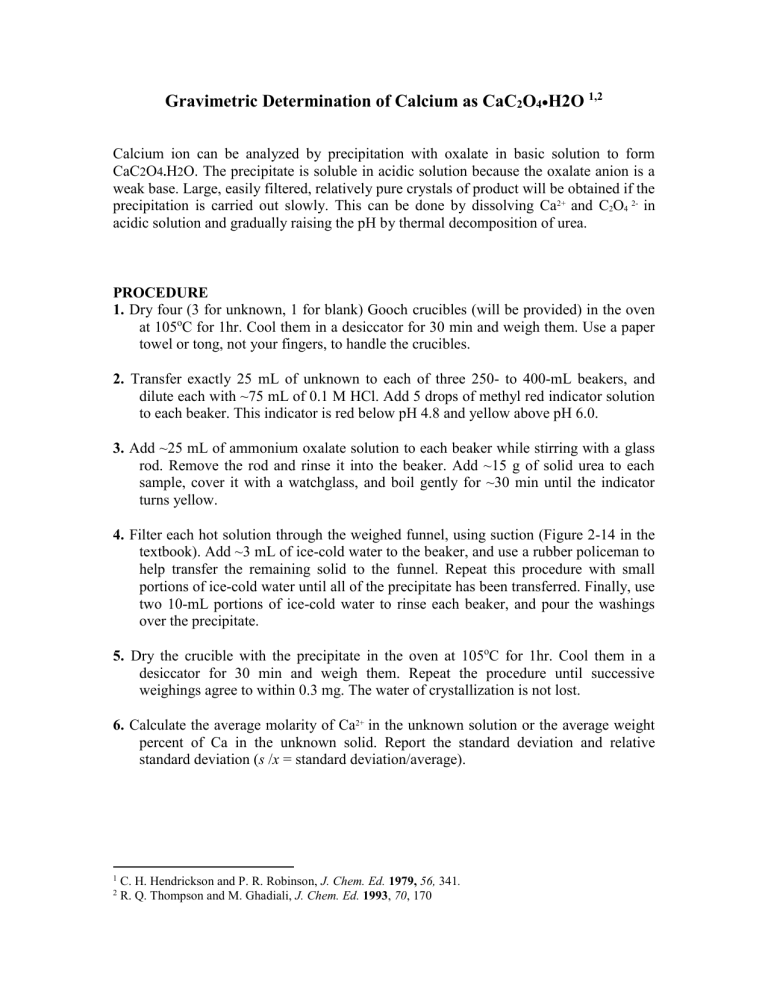
Gravimetric Determination of Calcium as CaC
2
O
4
H2O
1,2
Calcium ion can be analyzed by precipitation with oxalate in basic solution to form
CaC 2 O 4 .
H 2 O. The precipitate is soluble in acidic solution because the oxalate anion is a weak base. Large, easily filtered, relatively pure crystals of product will be obtained if the precipitation is carried out slowly. This can be done by dissolving Ca 2+ and C
2
O
4
2in acidic solution and gradually raising the pH by thermal decomposition of urea.
PROCEDURE
1. Dry four (3 for unknown, 1 for blank) Gooch crucibles (will be provided) in the oven at 105 o
C for 1hr. Cool them in a desiccator for 30 min and weigh them. Use a paper towel or tong, not your fingers, to handle the crucibles.
2. Transfer exactly 25 mL of unknown to each of three 250- to 400-mL beakers, and dilute each with ~75 mL of 0.1 M HCl. Add 5 drops of methyl red indicator solution to each beaker. This indicator is red below pH 4.8 and yellow above pH 6.0.
3. Add ~25 mL of ammonium oxalate solution to each beaker while stirring with a glass rod. Remove the rod and rinse it into the beaker. Add ~15 g of solid urea to each sample, cover it with a watchglass, and boil gently for ~30 min until the indicator turns yellow.
4. Filter each hot solution through the weighed funnel, using suction (Figure 2-14 in the textbook). Add ~3 mL of ice-cold water to the beaker, and use a rubber policeman to help transfer the remaining solid to the funnel. Repeat this procedure with small portions of ice-cold water until all of the precipitate has been transferred. Finally, use two 10-mL portions of ice-cold water to rinse each beaker, and pour the washings over the precipitate.
5. Dry the crucible with the precipitate in the oven at 105 o
C for 1hr. Cool them in a desiccator for 30 min and weigh them. Repeat the procedure until successive weighings agree to within 0.3 mg. The water of crystallization is not lost.
6. Calculate the average molarity of Ca 2+ in the unknown solution or the average weight percent of Ca in the unknown solid. Report the standard deviation and relative standard deviation ( s / x = standard deviation/average).
1 C. H. Hendrickson and P. R. Robinson, J. Chem. Ed. 1979, 56, 341 .
2 R. Q. Thompson and M. Ghadiali, J. Chem. Ed. 1993 , 70 , 170
